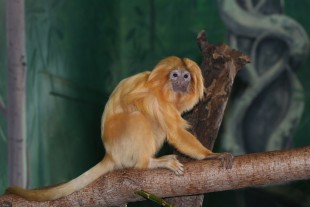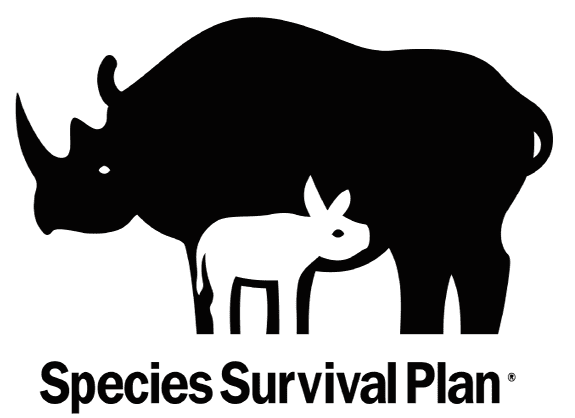
Golden Lion Tamarin
Golden lion tamarins are small, social South America primates with a striking reddish-gold coat and distinctive mane. In the 1980s they were almost extinct in the wild, but thanks to intensive conservation efforts this endangered species now numbers about 2,500, one-third of which are descendants of animals raised in human care.
Range & Habitat
Dense forests of the Atlantic coastal regions of southeastern Brazil. Golden lion tamarins prefer humid climates, and inhabit the closed canopies of forests that have many vines and fruit available.
Conservation Status: Endangered
Endangered due to habitat loss, poaching and collection for the pet trade.
Diet
In the Wild: Tree gum, fruit, insects, small invertebrates, flowers, leaves, nectar and bird eggs. At the Zoo: Marmoset diet, marmoset jelly, mealworms, monkey chow, orange slices, apples, bananas, and grapes.
Life Span
Fun Facts about the Golden Lion Tamarin
- The golden lion tamarin gets its name from the golden colored hairs around its neck that form a mane very similar in appearance to a lion’s mane. Both male and female golden lion tamarins have mane-like hairs that frame their faces.
- Golden lion tamarins use their long slender fingers and claws to break through tree bark and pull out insects to eat. This process is called micromanipulation.
- The golden lion tamarin is a small primate with a long tail. The body of a golden lion tamarin can measure 6-10 inches in length, with a tail measuring 12-15 inches in length. The golden lion tamarin’s tail is not prehensile, which means it does not use it to grip tree branches or other objects as it moves throughout the trees.
- Golden lion tamarins are a social species, living in groups of two to eight family members. Females usually give birth to twins, and while all members of the group will care for the babies, the adult male does the bulk of the work.
Sources
Frantom, S. (1999). Leontopithecus rosalia (golden lion tamarin). Retrieved May 15, 2020, from https://animaldiversity.org/accounts/Leontopithecus_rosalia/
Golden Lion Tamarin. (2018, September 10). Retrieved May 15, 2020, from https://a-z-animals.com/animals/golden-lion-tamarin/
Golden lion tamarin. (2020, April 20). Retrieved May 15, 2020, from https://nationalzoo.si.edu/animals/golden-lion-tamarin
Heinz, L. (2017). Golden Lion Tamarin (Leontopithecus rosalia) - Extinction.photo by Marc Schlossman. Retrieved May 15, 2020, from https://www.extinction.photo/species/golden-lion-tamarin/



